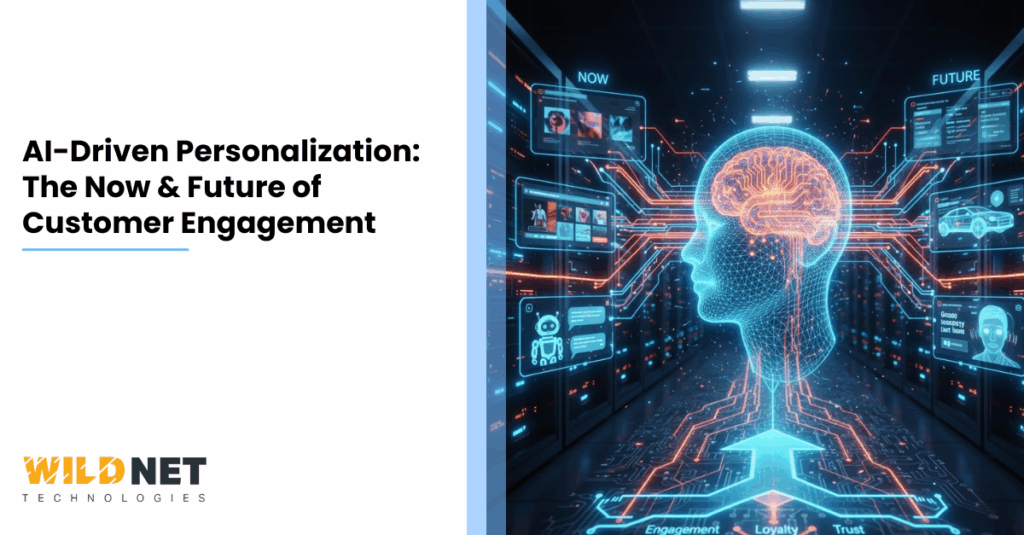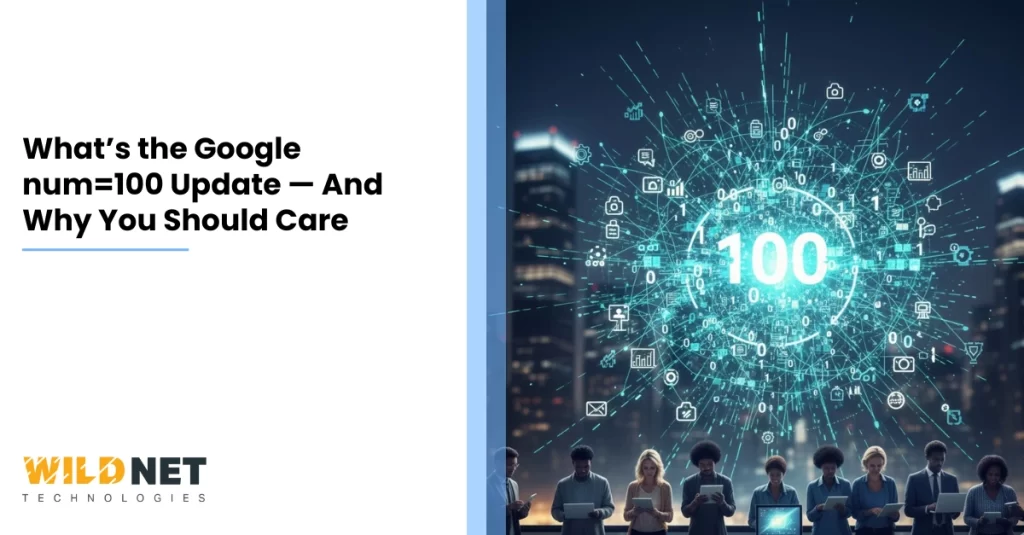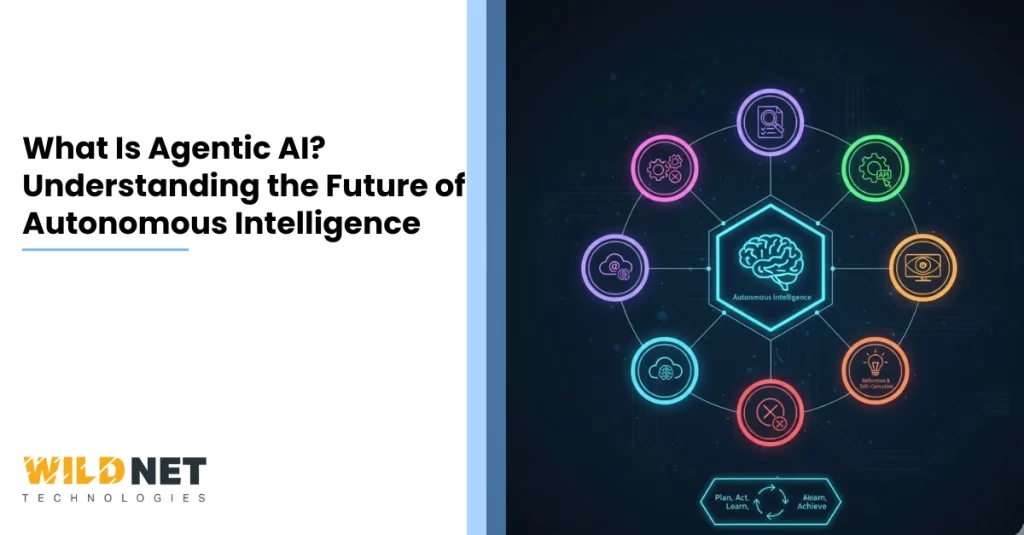Summary
The way AI-driven personalization is revolutionizing the future of customer engagement is mind-blowing. The possibility of delivering omnichannel experiences to customers, through predictive insights, and enhanced customer service with AI is now a reality, thanks to it. With the right AI-powered strategies in place, businesses can anticipate needs, provide hyper-relevant solutions, and cultivate those lasting relationships – all while streamlining operations and driving measurable results.
It’s a win-win-win, really.
Key Takeaways
- AI-driven personalization is reshaping customer engagement by delivering hyper-relevant, real-time experiences across every touchpoint.
- Seamless omnichannel journeys and data-driven strategies help brands understand customers deeply and engage them consistently.
- Customer service AI and AI chatbots enhance support, boost satisfaction, and drive long-term loyalty through faster, smarter interactions.
Introduction
Definitely, it’s a yay moment that you are online now, but there’s something more you need to actually shine. What’s that? Well, it’s making your customers happy who don’t just buy a product or service but also anticipate an experience. They want to be known, understood, and served in ways that feel personal. That’s exactly where AI-driven personalization comes in.
When paired with seamless omnichannel experiences and data-driven strategies, it’s transforming the future of customer engagement in dramatic ways.
In this blog, we’re about to take a closer look at what AI-powered customer engagement looks like.
Many people are apprehensive about all this new technology, but we, as the best digital marketing services provider, are going to show how it can actually lead to deeper and more meaningful relationships with your audience.
A Few Facts
- 80% of customers are more prone to make a purchase when a brand delivers a personalized experience. (Zippia)
- By the time customers reach out, 57% of their buying decision is already made. (Oracle)
- Customers have 2.4 times more chances to stay loyal to a brand when their problems are taken care of quickly. (Forrester)
The New Era of Customer Engagement: Why Personalization Matters
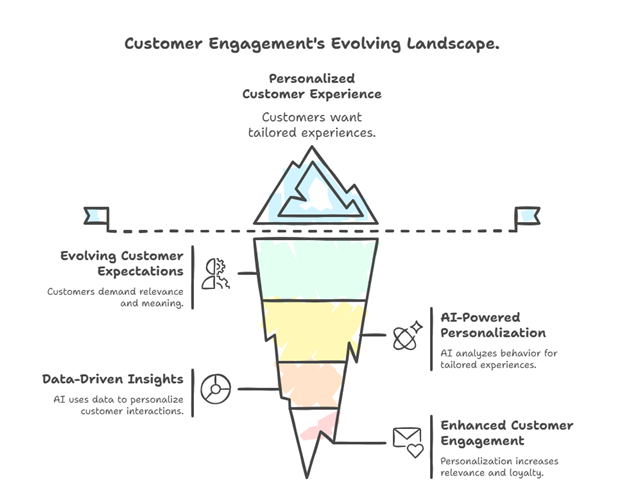
The evolving landscape of customer engagement
From Mass Marketing to One-to-One Experience
Customer engagement has evolved. It’s not at all like how it used to be, where the spray and pray(sending out generic messages) approach worked miraculously. Today, customers ask for more.
These days, they want experiences from you that just feel theirs. Their preferences, their behaviors, their unique context – these things count. It’s not about raw numbers or reaching the most people possible. It’s about making that genuine, personalized connection with each and every customer.
But yes, it can definitely be very frustrating to keep up with these evolving expectations. Still you hit the nail on the head – that shift, that’s at the core of the future of customer engagement. It’s all about relevance, about meeting people where they are and providing them with something truly meaningful.
The Power of AI in Personalization
AI-personalization is the real power upgrade for businesses in the evolving circumstances. Traditional personalization (like segmenting customers based on age or location) only gets you so far. AI, on the other hand, can analyze a customer’s browsing behavior, purchase history, interactions, sentiment, and more, and use that to deliver highly tailored experiences.
We want you to imagine this – your customer lands on your site, and, on the grounds of their past behavior, the UI subtly changes. The products they see, the messages they read, the offers they get, all feel like they were made just for them. This is not magic; this is the combination of data & AI.
Why This Matters for Engagement
- Higher relevance: When customers feel like you’re speaking to them, engagement goes up.
- Stronger loyalty: Personal experiences build trust, and trust builds loyalty.
- Better ROI: Personalized marketing often converts better because it’s not noise, it’s meaningful.
Understanding AI’s Role in Customer Service
To truly appreciate how personalization is redefining engagement, we need to talk about customer service AI and AI chatbots.
AI Chatbots: The Frontline of Engagement
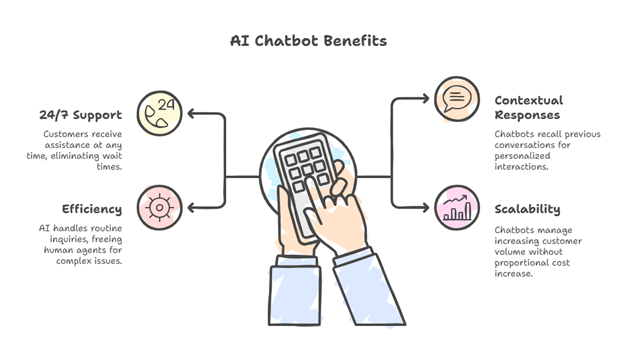
Benefits of AI Chatbots
One of the most visible ways AI is helping is via AI chatbots. These are not your grandmother’s chatbots that respond with rigid, pre-programmed lines. Modern, intelligent chatbots use natural language processing (NLP), machine learning, and even sentiment analysis to understand what customers are telling and respond in a human-like way.
Key Benefits of AI Chatbots:
- 24/7 Support: Customers get help any time. No more waiting for “office hours.”
- Contextual Responses: Bots remember past interactions, so they can pick up where the customer left off.
- Efficiency: The general routine queries, like order details and FAQs, will be smoothly handled by AI chatbots. Nice, right? This frees up human agents for more complex tasks.
- Scalability: As customer volume grows, chatbots can handle more queries without a linear increase in cost.
Beyond Chatbots: AI in Customer Support & Agent-Assisted Models
Agreed! Chatbots are wonderful and useful, but is it all AI capable of? Well, if we tell you it’s just the beginning. AI in customer support is becoming better every day. And yes, the aim is beyond automation; it’s about mimicking human responses.
For example, the current AI systems are helping agents respond better by giving them real-time summaries of previous interactions. What more? They’re predicting what customers might ask next. It might feel like you’ve entered some Sci-Fi, but we repeat, it’s just the beginning.
There’s also a rise of “agentic AI”, AI that doesn’t just respond, but proactively takes action based on context, customer intent, and past data.
The Mechanics: How AI-Driven Personalization Works
The mechanics of AI-driven personalization
Now, when you know the power of personalization, let’s get to the BTS(Behind the scenes of all the AI magic).
Data Collection: Fuel for AI
To personalize, you need data. A lot of it. This includes:
- Purchase history
- Browsing behavior
- Clickstreams
- Search terms
- Customer support interactions
- Demographic and psychographic data
AI systems gather and analyze this data to build a 360° customer profile, which acts as the foundation for personalized experiences.
Predictive Analytics & Machine Learning
Once AI has data, it doesn’t just sit on it. Predictive models can:
- Anticipate customer needs (e.g., when they might buy, what they might like)
- Segment customers dynamically (not just by demographics, but by behavior and intent)
- Generate personalized recommendations (products, content, support flows)
This predictive capability means personalization is not just reactive (based on what’s already happened), it becomes proactive.
Feedback Loop & Continuous Learning
AI-driven personalization isn’t static. It evolves. With every interaction (a chatbot convo, a purchase, a support call), AI learns more:
- Was the recommendation accepted?
- Did the customer find the conversation helpful?
- Did they abandon the cart? Why?
These insights feed back into the model. Over time, the AI becomes smarter, more accurate, and more personalized.
Seamless Omnichannel Experiences: Making Personalization Universal
Personalization isn’t just about one channel, it’s about making experiences consistent and seamless across all touchpoints.
What Is a Seamless Omnichannel Experience?
Imagine this:
A customer browses on their mobile app. Later, they visit your website on a desktop. Then they reach out via social media. At every step:
- They see offers relevant to what they did previously.
- The chatbot on your site remembers its conversation from mobile.
- The product suggestions reflect their past behavior across channels.
That’s the power of a seamless omnichannel experience.
How AI Enables Omnichannel Personalization
AI makes this possible by:
Unifying Data Across Channels
AI systems aggregate customer data from web, mobile, in-store, social media, and support, building a single, coherent customer profile.
Contextual Understanding
By interpreting customer behavior across channels, AI understands not just what they did, but why they did it. That helps in offering truly tailored experiences.
Smart Routing
AI chatbots or support systems can route customers to context-appropriate content or agents, ensuring that the right channels connect in the right way.
Real-Time Adaptation
As customers switch devices or channels, AI adjusts the experience in real time, continuing the conversation seamlessly.
The Business Impact: Why AI-Driven Personalization Is a Big Deal
AI personalization impact ranged from reactive to proactive
Let’s pause and look at the business side: Why are companies investing heavily in AI-driven personalization? Because the impact is significant.
Improved Customer Satisfaction & Loyalty
When customers feel seen and understood, their satisfaction levels increase. Personalized experiences make customers feel valued, which strengthens loyalty. AI-driven personalization helps deliver that kind of experience at scale.
Cost Efficiency in Customer Service
By automating routine tasks through customer service AI, companies can significantly lower the load on human agents. This doesn’t mean cutting corners; rather, it means letting humans focus on more complex, high-value interactions.
Higher Conversions and Revenue
Personalized product recommendations, targeted offers, and predictive outreach lead to more conversions and average order values. Data-driven strategies powered by AI ensure that marketing spend is more efficient and effective.
Proactive Engagement & Retention
With predictive analytics, businesses can anticipate customer needs before they arise. That means proactive support, predictive offers, and even early detection of churn risks, all of which help retain customers longer.
Real-World Use Cases: AI in Action
To make this concrete, here are some real-world or plausible examples of AI in customer experience.
E-commerce & Retail
- Personalized Shopping Journeys: AI chatbots on e-commerce sites can suggest products as per the user’s browsing history, previous purchases, and even current trends.
- Proactive Re-Engagement: Predictive models can detect when a customer is likely to churn or when their favorite product might need a refill, and trigger personalized messages.
- Seamless Support: Customers can ask a chatbot “Where is my order?” and get instant, personalized updates without speaking to a human.
Travel & Hospitality
- 24/7 Support: AI chatbots handle queries like booking status, cancellations, and FAQs, even late at night.
- Personalized Recommendations: As per the past travel history and preferences, AI can suggest activities, upgrades, or nearby experiences.
Financial Services
- Smart Advice: In banking or fintech, AI-powered assistants can offer advice or nudges based on spending habits or upcoming bills.
- Proactive Alerts: With predictive analytics, a bank might warn a customer of potential overdrafts or recommend a tailored savings plan before they even ask.
Telecom & Customer Support
- Agent Assist Tools: AI can help human agents by summarizing customer history, predicting intent, and suggesting responses in real time.
- Autonomous AI: More advanced AI (like “agentic AI”) can take proactive steps, not just respond, by anticipating customer problems and acting accordingly.
Challenges and Considerations
Of course, this isn’t all sunshine and rainbows. There are real challenges when implementing AI-driven personalization.
Data Privacy and Ethics
- With data-driven strategies, companies must be careful about how they collect, store, and use customer data.
- Transparency and consent are critical: customers should know what data is being used and why.
- Ethical AI is important: personalization should not feel creepy or invasive.
Balancing Automation and Human Touch
- While customer service and AI will be interconnected and can handle a lot, there will always be complex issues that need human empathy.
- Over-automation risks making the experience feel impersonal — the sweet spot is often a hybrid model (AI + human).
Accuracy and Relevance
- AI models need good data. If customer data is stale, incomplete, or biased, personalization can go wrong.
- Continuous learning is a must: the AI should update and improve over time, based on real customer feedback.
Operational Complexity
- Integrating AI systems across channels (web, mobile, social) takes work.
- Teams need to align: marketing, support, data science, and product all need to collaborate.
- Cost of implementation: building, training, and maintaining AI models is non-trivial.
Best Practices for Implementing AI-Driven Personalization
Best practices for implementing AI personalization
If your business is thinking of diving into AI personalization (or scaling what you already have), here are some practical tips:
Start with Clear Goals
Define what “personalization” means for you. Is it better product recommendations? Faster support? Higher retention?
Map the Customer Journey
Identify key touchpoints across channels (web, mobile, social) where personalization can make a difference.
Invest in Quality Data Infrastructure
Make sure your data is clean, unified, and accessible. AI is only as good as the data it’s fed.
Build a Feedback Loop
Use customer interactions to continuously train and improve your AI. Ask for feedback, track performance, and refine.
Use a Hybrid Model
Leverage AI chatbots for routine tasks but keep humans in the loop for emotional or complex cases.
Be Transparent and Ethical
Let customers know how their data is being used. Offer opt-outs and respect their privacy.
Measure Impact
Use data-driven metrics (engagement rate, resolution time, retention, CLV) to assess how personalization is working.
Scale Gradually
Don’t try to do everything at once. Pilot in one channel or use-case, learn, and then expand.
The Future of Customer Engagement: What’s Next for AI
Looking ahead, the future of customer engagement promises even more exciting developments around AI-driven personalization.
- Agentic AI: AI that acts proactively, makes decisions, and navigates complex workflows on behalf of the business.
- Generative AI for CX: Large language models (LLMs) could power even more human-like interactions, generating personalized content, responses, and offers.
- Hyper-personalization: As data sources grow (IoT, voice, social), AI personalization will become richer, more contextual, and even anticipatory.
- Adaptive Conversational AI: Models that learn not only typed text but voice tone, timing, and sentiment in real time, adapting conversation style.
- Responsible AI & Explainability: As AI’s role grows, businesses will need to make certain that their AI systems are transparent, fair, and explainable to customers.
Conclusion: Why AI-Driven Personalization Is a Game-Changer
AI-driven personalization is not a tongue twister in the marketing world. It’s here and yes very important. It’s fundamentally reshaping how businesses engage with customers.
By combining:
- AI-powered chatbots and customer service systems (so-called customer service AI),
- Seamless omnichannel experiences, and
- Data-driven strategies,
Companies can deliver experiences that feel personal, relevant, and meaningful, at scale.
This shift isn’t just good for customers (they get more relevant, timely, and thoughtful interactions), it’s also great for businesses (better loyalty, lower cost, higher ROI).
The future of customer engagement is here, and AI is leading the charge.
If you’re looking for AI-powered marketing services, get in touch with us at Wildnet Technologies today.
Author Bio
Wildnet Technologies has been a leader in digital services in India for over 19 years, offering various services, including marketing and IT. We have empowered over 4,100 clients in the digital realm through cutting-edge AI marketing and development services. We’ve received numerous awards, including Google Partnership, Red Herring Winner 100, ISO (27001) Certification, Semrush Certified Partnership, Deloitte Technology Fast500 (Asia), Deloitte Technology Fast50 (India), Microsoft Silver Partnership, and Great Place To Work (2025-2026).
Read More:
- How to Stop Begging for Clicks with Apt SEO Customer Journey?
- How AI Is Redefining Customer Experience: Chatbots & ML
- Instagram Marketing Tactics That Drive Engagement and Sales
- From Click to Conversion: How to Map and Optimize the Entire Customer Journey in 2025
FAQs
Question 1. How does AI-driven personalization improve customer engagement?
Answer. AI in customer engagement is interesting in itself. It takes into consideration the past customer behavior, what they prefer, and past interaction to provide tailored experiences. This makes communication more relevant, boosts satisfaction, and increases the likelihood of conversion and repeat engagement.
Question 2. What role do AI chatbots play in customer experience?
Answer. AI chatbots are for quick support. They answer FAQs, offer personalized recommendations, and help users throughout their journey in an instant. What more? AI chatbots help reduce wait times, improve efficiency, and enhance overall customer satisfaction.
Question 3. How does AI support seamless omnichannel experiences?
Answer. AI unifies customer data across platforms, web, mobile, social, and in-store, ensuring consistent, personalized interactions no matter where customers engage. It helps maintain context and continuity across channels.
Question 4. Is AI in customer support replacing human agents?
Answer. Not entirely. AI handles repetitive tasks and quick responses, while human agents focus on complex, emotional, or high-value issues. This hybrid model leads to faster resolution and better overall customer experience.
Question 5. Why are data-driven strategies important in AI personalization?
Answer. Data fuels AI’s ability to understand patterns, predict needs, and personalize interactions. Accurate, unified data helps AI deliver relevant recommendations, streamline journeys, and continuously improve engagement over time.
